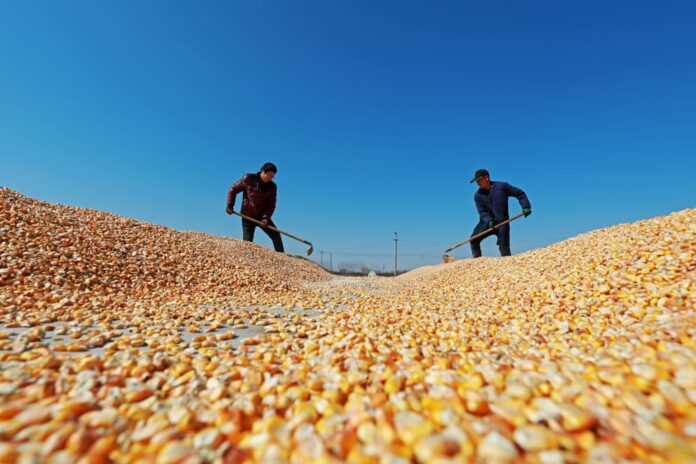China’s Grain Production Sets New Record
China’s agricultural sector is thriving, with this season’s grain output poised to reach a new record high. Thanks to higher yields and an expanded planted area, the nation is on track to produce 706.5 million tonnes of corn, rice, and wheat combined in the 2024-25 season, a 1.6 percent increase from the previous harvest. The total planted area of 119.3 million hectares saw a slight increase of 0.3 percent, while the average yield across the three grains rose by 1.3 percent to 5.92 tonnes per hectare.
Corn, being the most widely cultivated grain, saw a record output of 294.9 million tonnes from a planted area of 44.7 million hectares. The adoption of higher-yielding corn varieties played a significant role in driving production growth. However, challenges such as mycotoxin contamination in some regions have impacted the actual production numbers. Despite these challenges, the United States Department of Agriculture expects a 12 percent increase in corn usage for feed and residual purposes in the 2024-25 marketing year.
Rice production in China also saw a modest increase to 207.5 million tonnes, harvested from 29 million hectares. With an average yield of 7.15 tonnes per hectare, the country’s milled rice output is expected to reach 145.3 million tonnes in the current marketing year. On the other hand, wheat production is set to hit a record 140.1 million tonnes, with an average yield of 5.94 tonnes per hectare.
Despite the optimistic outlook for domestic grain production, China’s demand for Australian wheat has dwindled in recent months. Data from the Australian Bureau of Statistics shows a drastic decrease in wheat exports to China, signaling a shift in market dynamics and preferences. This trend aligns with projections of lower wheat imports by China for the 2024-25 marketing year.
The pricing and quality of grains, particularly wheat, play a crucial role in shaping market dynamics. While wheat prices in China have experienced fluctuations, the government’s support programs aim to stabilize prices and ensure fair returns for farmers. The quality of wheat harvested this season has been generally good, although reports of toxin issues in some regions highlight the challenges faced by the industry.
Looking ahead, the balance between domestic production, import levels, and market demand will continue to influence China’s grain sector. The country’s focus on self-sufficiency and sustainable agricultural practices underscores the importance of efficient resource management and technological innovation in meeting the growing demand for grains.
In conclusion, China’s agricultural sector is poised for continued growth, with record grain production paving the way for a robust and resilient industry. By addressing challenges and leveraging opportunities, China is well-positioned to maintain its position as a key player in the global grain market.




